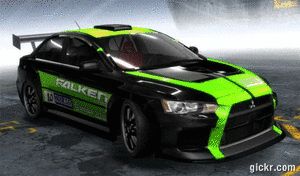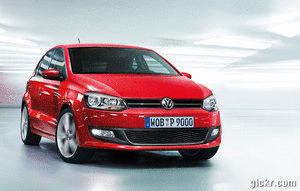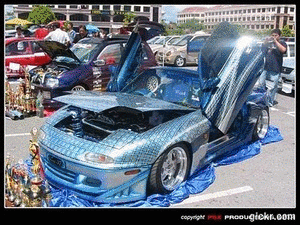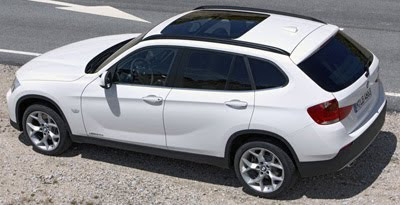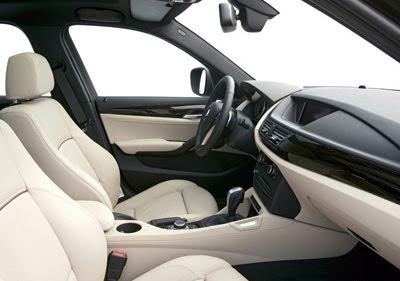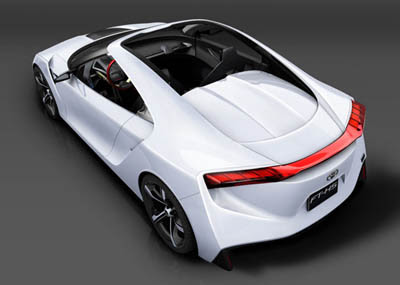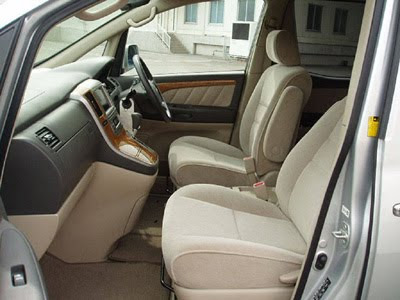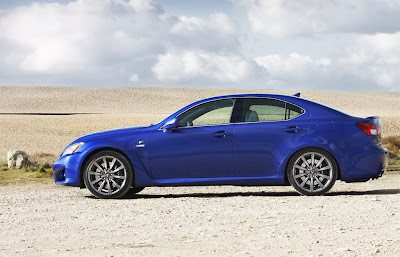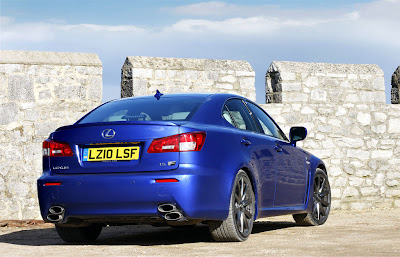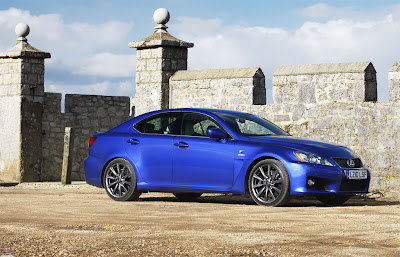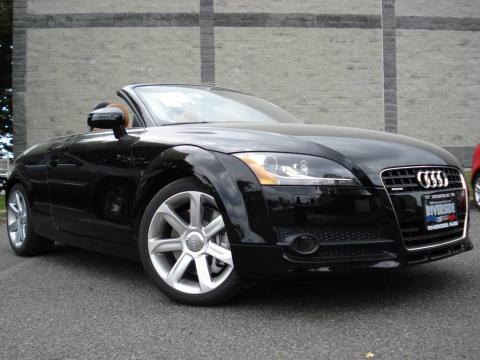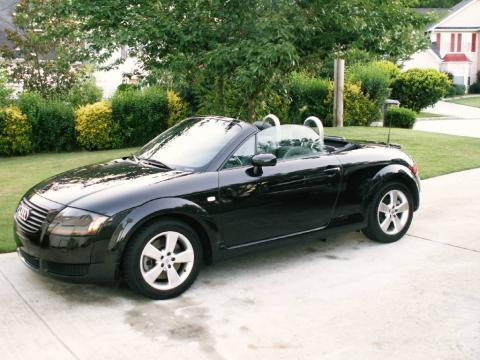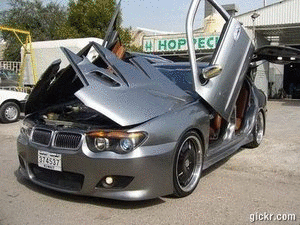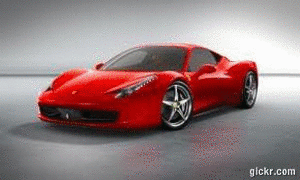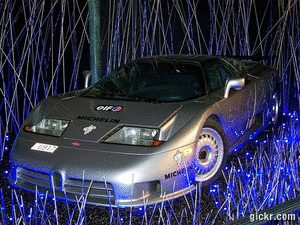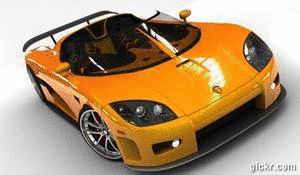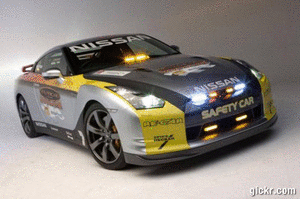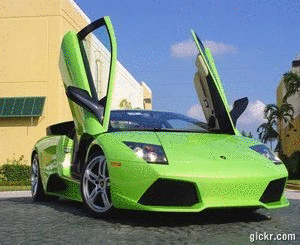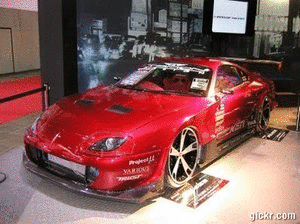The engine in the Audi S5 Cabriolet is a newly developed, supercharged, three-liter V6. The pressure in the 3.0 TFSI is generated by a mechanical supercharger - with impressive results: The power output tops out at 245 kW (333 hp), the torque between 2,900 and 5,300 rpm remains constant at a generous 440 Nm (324.53 lb-ft). The powerful thrust and the spontaneous, aggressive response make for a fascinating driving experience. The Audi S5 Cabriolet is catapulted in 5.6 seconds from zero to 100 km/h (62.14 mph) and accelerates up to a preset top speed of 250 km/h (155.34 mph). Yet at 9.6 liters per 100 km (24.5 US mpg), its fuel efficiency is highly impressive (preliminary values).
Standard equipment of the Audi S5 Cabriolet includes the servotronic, the seven-speed S tronic and the quattro drive system package. The sport differential is optional. A sport suspension keeps the body close to the road. The 18-inch cast aluminum wheels are equipped with 245/40 tires. The black brake calipers are emblazoned with S5 emblems. The acoustic top, xenon plus headlights, electrically adjustable sport seats with Alcantara leather upholstery, and a multifunction sport steering wheel are also standard equipment.
Diverse design features contribute to a distinctively sporty styling, including modifications at the lower front and back panels, at the air intakes and at the tailpipes. In the interior, special seat upholstery, door sill trims and inlays in matt brushed aluminum underscore the high-quality, dynamic style of the high-end model. The pointers of the instruments are illuminated white to contrast with the gray scales.
Audi A5 Cabriolet
Dynamic and wonderful to look at, the new Audi A5 Cabriolet is a real Audi, and an especially exciting one at that. The four-seater with the fabric top combines a sporty character with the fascination of open-top driving, refined comfort, and great everyday utility. Seven powerful engines, an agile suspension and a wide range of high-end options make the new Audi model the most attractive mid-range convertible. The top-of-the-line model of Audi's new family of convertibles is the Audi S5 Cabriolet. The engine of the S5 Cabriolet is the newly developed, supercharged three-liter V6 with gasoline direct injection.
Like all open-top Audi models, the new Audi A5 Cabriolet too has a classic fabric top - which endows it with a striking silhouette of dynamic elegance. The lightweight softtop opens in 15 seconds - and closes in 17 seconds. The fully automatic open/close drive comes as standard. An acoustic top is optionally available, which reduces wind noise almost to the hardtop level.
When opened, the Audi A5 Cabriolet top folds down so effectively that very little trunk space is used up - leaving 320 liters (11.3 cu ft) of unused storage volume, clearly the best value in its field of competitors. The softtop compartment lowers itself automatically when the top is opened.
Equally useful is the fold-down rear seat backrest with the large pass-through between the luggage space and the interior, which increases the storage volume to a generous 750 liters (26.49 cu. ft.).
Automatic seat belt extenders round out the comfort in the interior. Neck-level heating is optionally available for the front seats. The optional leather seats are coated with a special layer to reduce solar heating. There is comfortable room for four persons. The refined ambiance combines with exemplary ergonomics to convey an atmosphere of sporty elegance. Ultra-high-strength steels and selective reinforcements of the body ensure maximal rigidity and crash safety.

Fascinating dynamics: Audi drive select
The perfect addition to this technology package is the Audi drive select vehicle dynamics system, which enables the driver to chose among three different engine maps controlling the characteristics of the fuel feed, the shifting points of the seven-speed S tronic and multitronic, and the mode of operation of the servotronic steering system.
The new Audi A5 Cabriolet features a rich array of equipment, including 17-inch alloy wheels, automatic air conditioning, and an audio system with a CD player. One of the highlights among the optional equipment is the third-generation MMI operating system, which provides many attractive navigation and entertainment functions.
As the dynamic top-of-the-line model of the new production series, the Audi S5 Cabriolet occupies a very special position. Its three-liter TFSI - a V6 with turbocharger - unfolds its 245 kW (333 hp) and 440 Nm (324.53 lb-ft) of torque impressively: It responds tenaciously to the throttle and delivers excellent driving performance. The quattro drive, a sport suspension with 18-inch wheels and a number of special equipment details underscore the athletic power of the Audi S5 Cabriolet.
The exterior design
The Audi A5 Cabriolet combines Audi's progressive styling with the fascination of an open-top car. The long engine hood, the sharp lines, the sweep of the shoulder contour, the elegantly curved surfaces, the large wheels, the distinctive front end, and the expressive tail all interact to create a sculptural, sensuous whole. The Audi A5 Cabriolet is 4.63 meters (15.19 ft) long and 1.85 meters (6.07 ft) wide, but only 1.38 meters (4.53 ft) tall: the sportiest proportions in its class.
The styling of the front end is dominated by the single-frame grille, which is flanked by large air intakes. The exquisite design of the headlights makes them look like technical jewels. The daytime running lights of the optional xenon plus headlights consist of LEDs. An aluminum molding lends high gloss to the windshield frame.
The looks of the tail end are sharpened by horizontal lines, broad tail lights, straight tailpipes, and a distinctly colored diffuser insert. The trunk lid bears an unobtrusive spoiler lip. The xenon plus headlight option comes complete with LED taillights, which create a distinctive light pattern.
The convertible top
The fabric top with the large glass rear window fits smoothly into the design profile. This is one of several reasons why Audi preferred it to a folding steel roof. What's more, its construction is much lighter in weight, which reduces the overall weight of the Cabriolet and lowers its center of gravity. The outer skin of the top is available in a choice of four colors, the inside in three.
The softtop consists of three layers. The intermediate layer is a cushioning pad. In the optional acoustic top, which reduces wind noise almost to hardtop level, this is replaced by a foam layer up to 15 millimeters (0.59 in) in thickness. The acoustic top comes with a ceiling light for the rear seat - a solution usually only found in the topmost convertible luxury segment.
In both versions, a hydraulic pump and four operating cylinders that move the top are actuated when a pushbutton on the central console or on the optional remote access assistant is depressed. It takes 15 seconds to open the top, 17 seconds to close it. Both actions can also be actuated while driving at up to 50 km/h (31.07 mph) - which makes driving much more comfortable.
When opened, the top is retracted underneath a fixed cover, where it is folded down into an extremely compact shape. Its storage compartment, which automatically lowers itself into the trunk space, only takes up a few centimeters in height - and only 60 liters (2.12 cu ft) of the 380 liters (13.42 cu ft) of luggage space. The remaining 320 liters (11.3 cu ft) with the top open are by far the best value among comparable vehicles. What's more, the low position of the loading lip makes loading and unloading easier. The wind deflector, which is supplied as standard, can be stored in the spare-wheel well to save space.
A very convenient feature in the Audi A5 Cabriolet are the split folding rear seat backrests. They can be easily unlocked by actuating levers in the trunk and drop automatically onto the seat cushions. The standard pass-though is 70 centimeters (27.56 in) wide. The loading space behind the front seatback is 1.76 meters (69.29 in) long, providing a total storage volume of 750 liters (26.49 cu ft).
The body
As is typical of Audi models, the A5 Cabriolet has an extremely rigid body. This is a prime reason for its precise driving performance, its high comfort level, and its maximized crash safety.
In the construction of the body-in-white, several innovative technologies are used. A prime example are the ultra-high-strength steels with their extremely high tensile strength, which Audi manufactures in-house using hot forming. The front fenders of the Audi A5 Cabriolet are made of aluminum to lower the weight and to optimize axle load distribution. An enclosed underbody improves the airflow and thereby the fuel efficiency.
A whole array of additional reinforcement parts compensates for the absence of a solid roof. They are located in the front section, in the side skirts, in the windshield frame, and in the rear section. Located between the interior and the luggage section is the rollover protection. When a rollover threatens, spring-loaded aluminum braces are raised behind the rear seat headrests. Door-mounted head and chest sidebags provide protection in the event of a lateral impact.
The interior
With its generous wheelbase of 2.75 meters (9.02 ft) and the longest interior in its class, the Audi A5 Cabriolet has plenty of room for longer trips. That's also true for the rear seats, which can be optionally divided by a center console with two cup holders.
Elegance in flowing lines, functional ergonomics, and top-quality craftsmanship are the principal characteristics of the interior - and this too is typically Audi. The teardrop-shaped settings of the instruments have already become modern classics. The centrally mounted onboard monitor is standard equipment. The formed-plastic console focuses on the driver. Flowing lines link it to the central tunnel and the door linings. If the customer has ordered either one of the two navigation systems it comes with the highly convenient MMI operating system - the best solution on the market.
The low standard seats provide excellent control and support. Using seatbelts is facilitated by electric seat belt extenders. Special solutions are available as alternatives: firm sport seats, electric seat adjustment and heating - as a separate option also for the back seats.
In the climate-controlled comfort seats, small fans and an automatic auxiliary heater ensure luxurious comfort. This option provides neck-level heating - ducts on the topside of the seatback emit warm air that keeps the back of the head and neck warm. With its three-level control, the headroom heater is also available for sport seats. It prolongs the open-air season in the Audi A5 Cabriolet.
Another special feature is provided in the optional leather upholstery: a special coating inhibits solar heating while the Cabriolet is parked in the sun with the top down. This coating reflects infrared radiation and thus lowers the surface temperature by up to 20 degrees Celsius. Audi offers a choice of several seat coverings up to and including Fine Nappa leather. Inlays come as standard in Micrometallic platinum; aluminum and three different kinds of wood are available as options.
The engines
In the propulsion system of the A5 Cabriolet too Audi has consistently relied on innovative technologies: All five engines - the two TDIs and the three gasoline engines - use direct injection. They are impressive evidence that, at Audi, efficiency and dynamics go together and are interdependent.
The most powerful gasoline engine in the Audi A5 Cabriolet is the 3.2-liter FSI. It operates with the innovative Audi valvelift system, which varies the lift of the intake valves in two stages. As a result, the gas exchange improves and the throttle can be left open more often, minimizing throttling losses - which in turn boosts the torque and the power output while reducing fuel consumption. The V6 delivers up to 195 kW (265 hp) as well as 330 Nm (243.4 lb-ft) between 3,000 and 5,000 rpm. With front-wheel drive and multitronic it accelerates the Audi A5 Cabriolet in 6.9 seconds to 100 km/h (62.14 mph) - and up to a top speed of 246 km/h (152.86 mph). Its average fuel efficiency is an impressive 8.6 liters/100 km (27.35 US mpg). An optional alternative is quattro all-wheel drive, combined with the new seven-speed S tronic.
The 2.0 TFSI likewise attests to Audi's leadership position in engine design. This four-cylinder engine also uses the Audi valvelift system - but here it acts on the exhaust valves, with similar advantages as in the V6. Audi sells the two-liter turbo in two versions.
The transmission
Audi provides a choice of three different transmissions for the Audi A5 Cabriolet. The 2.0 TFSI with 155 kW (211 hp) comes with a six-speed manual transmission as standard, which excels in its short shifting travels and high operating precision. Both the two-liter engine and the 3.2 FSI are available with the multitronic continuously variable automatic transmission as an option, which combines smooth operation with high efficiency and a fuel-saving transmission ratio. For a dynamic driving style the multitronic is available with a sport program and a manual mode with eight fixed speeds.
For the more powerful version of the 2.0 TFSI and for the 3.2 FSI, the seven-speed S tronic is available as an option; in the 3.0 TDI it is standard equipment. This new high-tech dual-clutch transmission changes gears in a few hundredths of a second, and so smoothly that the driver hardly notices it. What's more, it is highly efficient and fuel-saving. The driver can let the seven-speed S tronic shift automatically or interact, if desired, via rocker switches on the steering wheel.
The seven-speed S tronic has been designed for use with the quattro permanent all-wheel drive. It is optionally available for the high-end diesel series and for the two powerful gasoline engines. The quattro drive system is dynamically designed - during normal driving it distributes the forces in a 40:60 ratio between the front and the rear. If one wheel skids, a center differential that operates purely mechanically transfers most of the power to the axle with the better traction.
The chassis
The Audi A5 Cabriolet leads its class in all relevant sporty criteria - steering response, stability and agility - yet it provides a very smooth ride. The reason for these strengths is the perfect distribution of axle loads. The front axle is located far forward in the front section - a configuration made possible by an unusual solution: the differential is mounted in front of the clutch or torque converter.
The chassis design too is technologically advanced: The front wheels are mounted on a five-link axle. The front axle support is firmly bolted to the body in order to maximize rigidity. The steering forces are transmitted to the wheels directly via the steering box, which is mounted very low within the chassis. The hydraulic rack-and-pinion steering provides a very responsive and highly precise connection to the road. Optionally available is the servotronic, which adjusts its support level to the driving speed.
The rear-wheel suspension of the Audi A5 Cabriolet is supported by a trapezoidal-link axle, which combines a smooth ride and maximum driving stability. The essential parts of both the front and the rear suspension are made of aluminum. The large brakes ensure powerful deceleration and react very precisely to the degree of pedal pressure. 16-inch or 17-inch aluminum wheels are standard, depending on the engine version. Optionally available from Audi and quattro GmbH are 18-, 19- and 20-inch wheels.
Another high-tech feature in the new Audi A5 Cabriolet is the Audi drive select vehicle dynamics system. It influences the characteristics of the fuel feed, the speed change points of the seven-speed S tronic, and the operating mode of the servotronic steering system. The driver presses a key to select a comfortable, intermediate, or dynamic operating mode for these subsystems. If the vehicle is equipped with a navigation system - and the MMI operator control that comes with it - a fourth engine map is provided, which the driver can program to suit.
Audi drive select is only available in combination with one or more of three additional technologies - the differential, the adaptive shock absorber control, and dynamic steering. Its superposition gear varies the gear ratio by nearly 100 percent as a function of the driving speed. The dynamic steering operates directly in city traffic. In highway driving it uses a more indirect ratio. To maximize driving safety, it cooperates closely with the ESP stabilization program - at the handling limits it keeps the Audi A5 Cabriolet on course by lightning-fast small interactions.
The equipment
The Audi A5 Cabriolet comes with an impressive array of standard equipment. This includes a fully automatic convertible top, 16-inch or 17-inch alloy wheels, a fold-down rear seatback with a large pass-through, and automatic air conditioning; the chorus audio system comes with integral CD player. Electric seat belt extenders and an electromagnetic parking brake are also standard.
Further luxury is available in the options: The adaptive light option combines xenon plus headlights with dynamic cornering lights; the high-beam assistant changes automatically between low beam and high beam. The advanced key provides keyless access and allows starting the car as well as opening and closing the top remotely. The deluxe automatic air conditioning manages the temperature separately in three zones in the vehicle. The acoustic top further lowers the wind noise level. And the climate-controlled comfort seat in combination with the neck-level heating creates a perfectly tempered environment.
When it comes to the chassis, the program is complemented by the Audi drive select system, the sport differential, and two conventional sport suspensions. The S line sport package plus combines the stiff set-up with performance features such as 10 millimeters less body height, 18-inch wheels and 245/40 tires with a package of special details for the interior. The S line exterior package, on the other hand, endows the vehicle with an especially dynamic look.
Further highlights are the two infotainment systems MMI navigation and MMI navigation plus - members of an entirely new equipment generation. Even the lesser model includes navigation imaging featuring 3D color graphics, a versatile reader for memory cards, and a DVD drive. Optionally available from Audi is a module for digital radio reception, a Bluetooth interface for the mobile phone, and an interface for full integration of the iPod.
The top version comes with exclusive technologies: an especially high-definition monitor, a big hard drive for music files and addresses, plus a special joystick function for the MMI control unit. With refinements such as a Bang & Olufsen sound system or a digital TV tuner, the MMI navigation plus can be turned into a high-end media center.
Innovative assistant systems from the luxury class make driving in the Audi A5 Cabriolet even more supremely relaxed. Audi optionally equips its open-top four-seater with high-tech solutions including adaptive cruise control, Audi side assist and Audi lane assist. They control the distance from the vehicle in front and assist in staying in lane or in changing lanes. The luxury-class Audi parking system advanced uses a rearview camera to display the area behind the vehicle on the onboard monitor.







